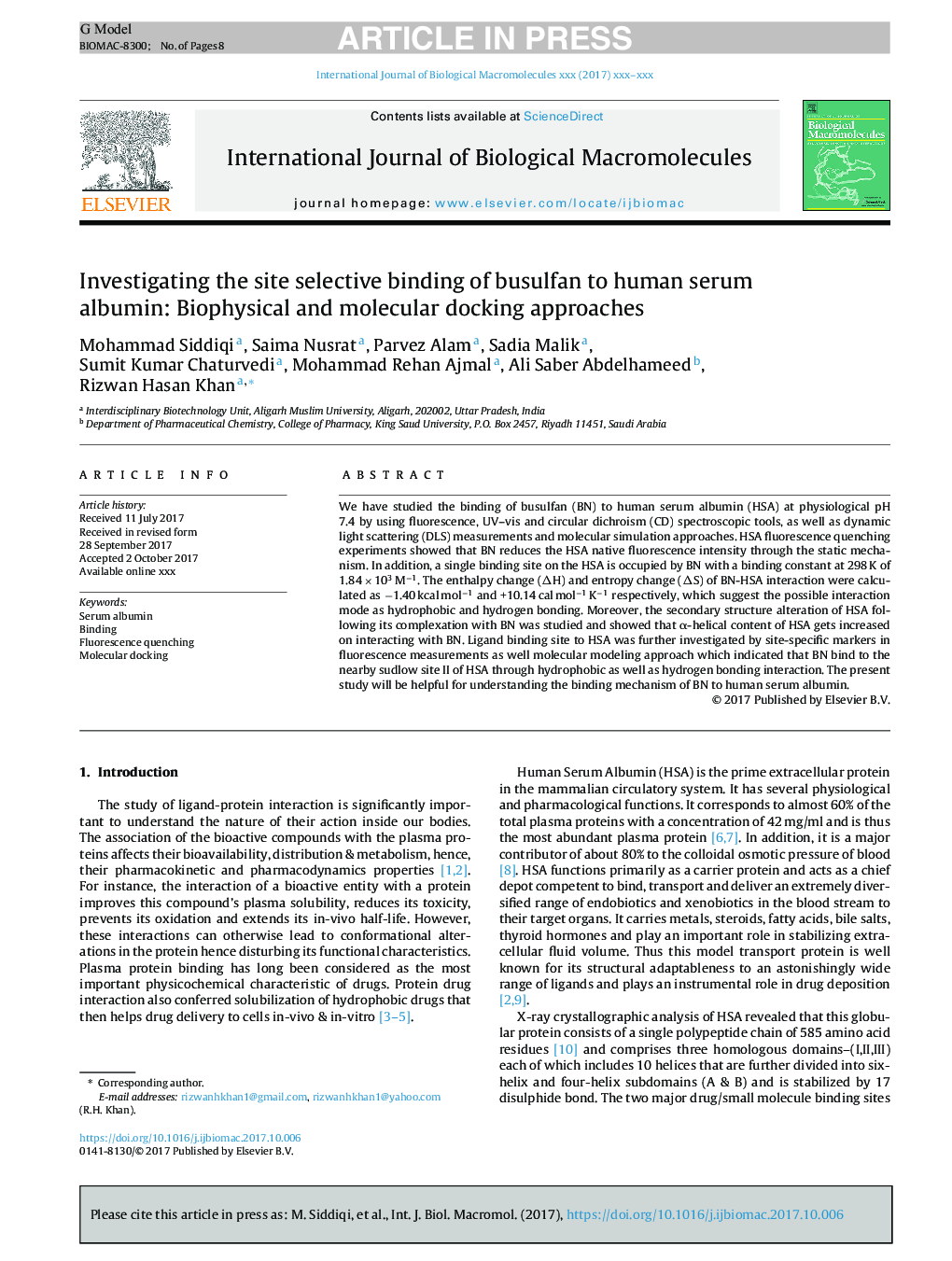| Article ID | Journal | Published Year | Pages | File Type |
|---|---|---|---|---|
| 8328607 | International Journal of Biological Macromolecules | 2018 | 8 Pages |
Abstract
We have studied the binding of busulfan (BN) to human serum albumin (HSA) at physiological pH 7.4 by using fluorescence, UV-vis and circular dichroism (CD) spectroscopic tools, as well as dynamic light scattering (DLS) measurements and molecular simulation approaches. HSA fluorescence quenching experiments showed that BN reduces the HSA native fluorescence intensity through the static mechanism. In addition, a single binding site on the HSA is occupied by BN with a binding constant at 298 K of 1.84 Ã 103 Mâ1. The enthalpy change (ÎH) and entropy change (ÎS) of BN-HSA interaction were calculated as â1.40 kcal molâ1 and +10.14 cal molâ1 Kâ1 respectively, which suggest the possible interaction mode as hydrophobic and hydrogen bonding. Moreover, the secondary structure alteration of HSA following its complexation with BN was studied and showed that α-helical content of HSA gets increased on interacting with BN. Ligand binding site to HSA was further investigated by site-specific markers in fluorescence measurements as well molecular modeling approach which indicated that BN bind to the nearby sudlow site II of HSA through hydrophobic as well as hydrogen bonding interaction. The present study will be helpful for understanding the binding mechanism of BN to human serum albumin.
Related Topics
Life Sciences
Biochemistry, Genetics and Molecular Biology
Biochemistry
Authors
Mohammad Siddiqi, Saima Nusrat, Parvez Alam, Sadia Malik, Sumit Kumar Chaturvedi, Mohammad Rehan Ajmal, Ali Saber Abdelhameed, Rizwan Hasan Khan,
